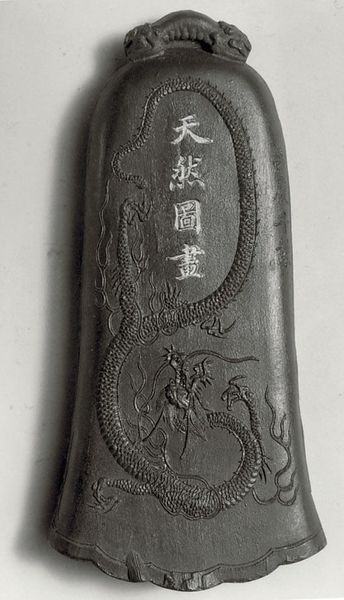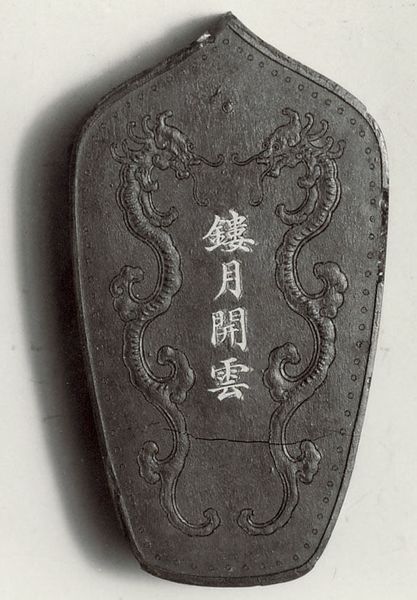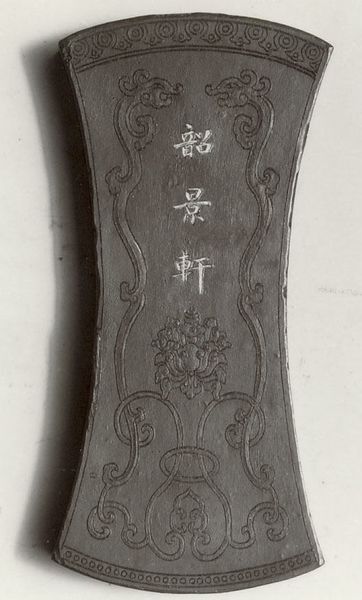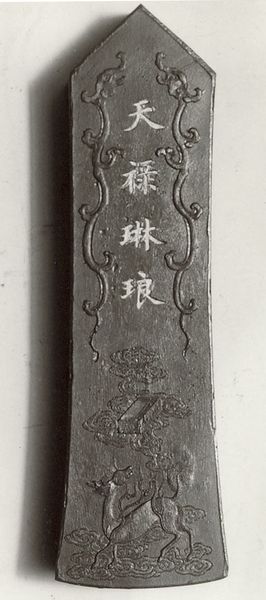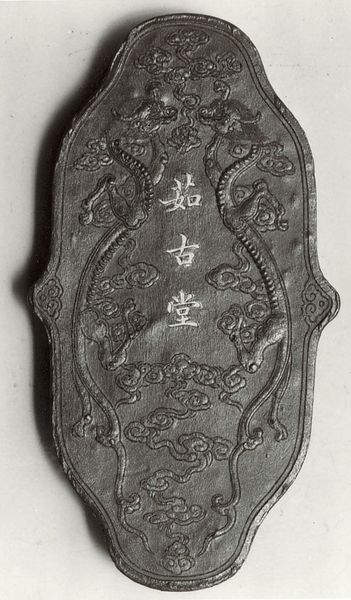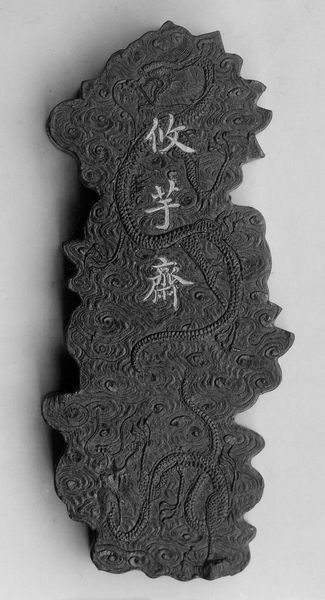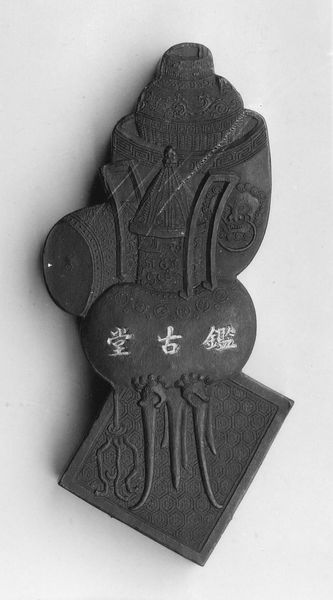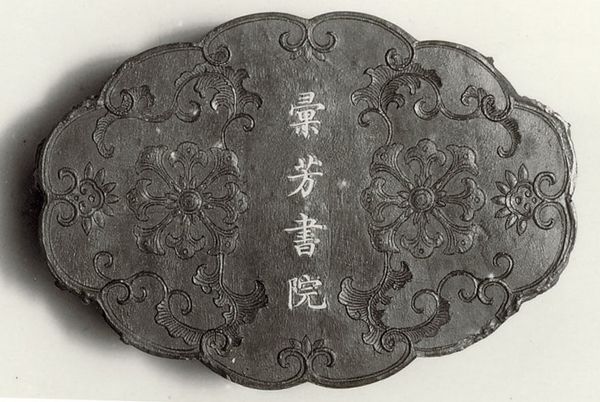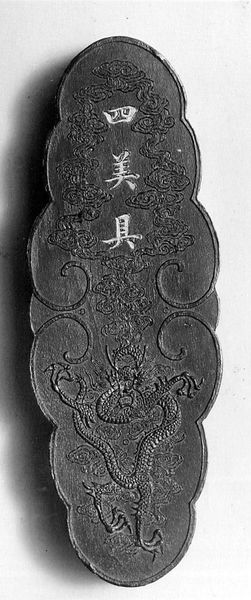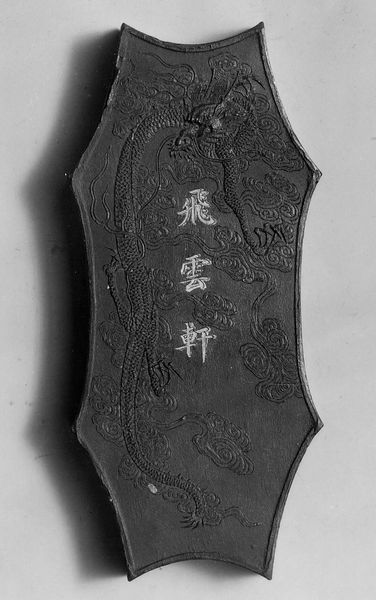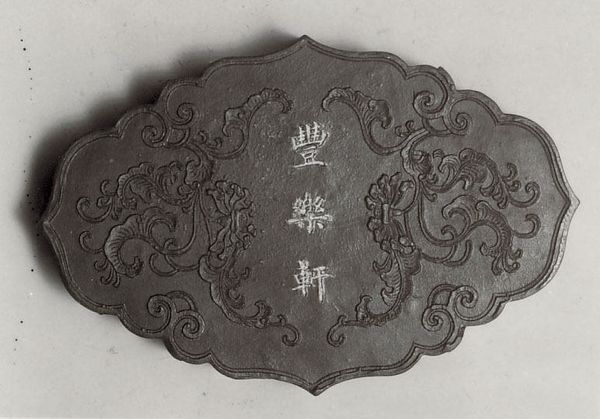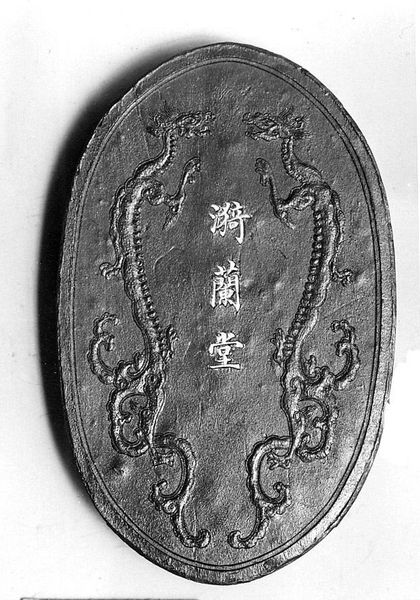
carving, ink, sculpture
#
carving
#
stone
#
sculpture
#
asian-art
#
sculptural image
#
figuration
#
ink
#
sculpture
#
china
#
statue
Dimensions: H. 3 7/8 in. (9.8 cm); W. 1 5/8 in. (4.1 cm)
Copyright: Public Domain
Curator: This striking sculptural image, titled "Books and Histories that Delight One's Mind," was created by Jian Guzhai between 1871 and 1933. It’s a testament to the enduring power of cultural symbols. Editor: My first thought is how dark and almost ominous it appears. The textures feel very tactile, despite the visual weight given by the monochrome palette. It's somber. Curator: Absolutely. It's crafted from carved stone and ink. This combination enhances the density but also speaks to a deeper interplay of material and meaning. Think of stone, for example, as a substance marked by permanence. The dragon motif would, in many Eastern contexts, immediately indicate dynastic power. How can we think about that iconography intersecting with more radical artistic voices emerging in the late 19th century? Editor: Precisely, and this specific dragon is fascinating. Unlike more traditional depictions, this one has wings that look almost bat-like, evoking perhaps more dangerous, volatile associations. Then there are the clouds, which give it dynamism while being icons of transformation, too. The visual vocabulary is speaking volumes. Curator: Indeed. The added inscriptions weave another layer into the discussion. “Books and Histories…” posits the artwork as both an aesthetic piece and a keeper of knowledge, directly tackling notions of social responsibility and class. But does the “delight” suggested in the title become a challenge, considering what’s going on socially and politically? Editor: I'd say so. The very choice of a dragon with winged iconography signals something of an unsettledness. This object seems to simultaneously uphold and critique established narratives. What kind of power did the artist feel he had by recrafting these potent symbols? Curator: Exactly! It presents this dialogue as a push-and-pull between accepting established legacies and redefining personal expression during major upheaval. We’re left grappling with questions of heritage and change. Editor: It shows us that these artworks can almost act as visual history books, telling us how much cultural expression and shared understanding shifts across time. A constant evolution we have a glimpse into. Curator: A glimpse, indeed. Hopefully our discussion sparks a deeper look into its cultural moment, considering issues of art as defiance, and the politics behind its chosen symbols.
Comments
No comments
Be the first to comment and join the conversation on the ultimate creative platform.
